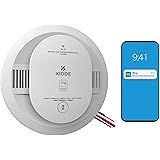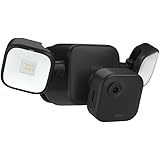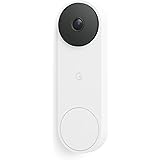The ubiquity of LED bulbs in modern homes is undeniable, largely due to their energy efficiency and purported long lifespan. Across India, initiatives by organizations like the Government of India have further increased their adoption, making them a common sight in households. Despite their many advantages, LED bulbs are not immune to failure, and many homeowners often find themselves replacing seemingly new bulbs far too frequently.
While the immediate reaction might be to discard a non-functional LED bulb and purchase a new one, this approach can be costly and environmentally wasteful over time. Fortunately, as demonstrated in the video above, a significant number of LED bulb failures can be resolved with a simple, cost-effective DIY repair. This guide delves deeper into the specifics of why LED bulbs fail and provides an expanded, detailed approach to successfully **repair LED bulb at home**.
Understanding How LED Bulbs Work
Before attempting to **fix an LED light**, it is beneficial to understand its basic components and operational principles. An LED bulb typically consists of several small Light Emitting Diodes (LEDs) mounted on a circuit board, which is then connected to a driver that converts AC household current to the DC voltage required by the LEDs. These LEDs are usually connected in series, meaning the current flows through each one sequentially.
This series connection is key to understanding why one faulty LED can cause the entire bulb to stop working. If even a single LED in the series circuit fails, it breaks the circuit, preventing current flow to all subsequent LEDs. Consequently, the entire bulb ceases to illuminate, giving the impression of a complete failure when often only a single, tiny component is at fault.
Common Reasons for LED Bulb Failure
LED bulbs are designed for longevity, often boasting lifespans of 25,000 hours or more. However, various factors can lead to premature failure. Identifying these common issues can help in understanding the nature of the repair.
Primarily, the most frequent culprit behind a dead LED bulb is the failure of an individual LED chip. These miniature light sources can burn out due to manufacturing defects, power surges, or simply reaching the end of their operational life, even if other LEDs on the same panel are still functional.
Furthermore, the LED driver, which regulates the power supply to the LEDs, can also fail. This component is crucial for the stable operation of the LEDs, and its malfunction can lead to flickering, dimming, or complete bulb failure. Heat management within the bulb also plays a significant role; inadequate heat dissipation can accelerate the degradation of both the LEDs and the driver components, leading to a shorter lifespan.
Identifying the Faulty LED
The video illustrates a practical method for pinpointing the specific LED that has failed, a crucial first step in any **LED bulb repair**. Once the bulb’s cover is removed, the individual LED chips are exposed. Visually inspecting these chips can sometimes reveal the problem, as a faulty LED might appear discolored, have a black spot, or exhibit visible burn marks.
However, visual inspection is not always conclusive. A more reliable method, as demonstrated, involves supplying power to the bulb and systematically shorting each LED. When the faulty LED is bypassed by a conductive material (like a metal wire or a small tool), the circuit is completed, and the remaining healthy LEDs will light up. This immediate illumination clearly indicates the position of the failed LED, allowing for precise intervention.
Step-by-Step Guide to Repair LED Bulb at Home
Undertaking an **LED bulb repair** is a straightforward process when approached systematically. While the video provides a quick overview, here’s an expanded guide to ensure a safe and effective repair.
Safety First: Disconnecting Power
Before commencing any work on electrical appliances, safety must be prioritized. It is imperative to always disconnect the LED bulb from any power supply. While the video shows checking the bulb directly in a powered socket, this step should be done with extreme caution. For actual repair work, the bulb should be completely removed from its fixture to eliminate any risk of electrical shock.
Working with electricity always carries inherent risks. Therefore, ensure your hands are dry, and consider using insulated gloves, especially if you are not accustomed to handling electrical components. Always double-check that the power source is completely off before touching any part of the bulb’s internal circuitry.
Opening the Bulb Housing
Most LED bulbs feature a plastic or frosted glass diffuser that covers the LED panel. This cover is typically attached with a snap-fit mechanism or a small amount of adhesive. It can usually be gently pried open using a flathead screwdriver or even strong fingernails, as shown in the video. Exercise care during this step to avoid damaging the diffuser or the LED panel underneath.
Upon removing the diffuser, the circuit board populated with the individual LED chips will be visible. This is the primary area where the repair will be conducted. Ensure the bulb is stable on a flat surface to facilitate easy access to the components.
Locating the Failed LED
With the bulb open and disconnected from power, the next step involves identifying the specific LED that has failed. As mentioned, visual cues such as a black dot or discoloration are strong indicators. However, for a definitive identification, the bypass method demonstrated in the video is highly effective.
Carefully insert the bulb back into a powered socket. Using an insulated wire or a small, non-conductive tool with metal tips, gently touch the two metal contacts (anodes and cathodes) of each LED one by one. When the faulty LED is shorted, the remaining LEDs on the panel will illuminate. This process helps to isolate the problem efficiently and accurately.
Bypassing the Faulty Component
Once the non-functional LED is identified, it must be removed or bypassed. The simplest method involves carefully scraping off the LED chip from its contacts on the circuit board. This can be done using a small flathead screwdriver, a sharp knife, or any pointed tool. The goal is to remove the LED chip itself, leaving the two copper pads it was soldered to exposed.
Once the LED chip is removed, the two exposed pads need to be electrically connected, or “shorted.” This completes the circuit where the faulty LED once resided. For a quick, temporary fix, a small piece of aluminum foil or even a graphite pencil mark can bridge the gap, but a permanent solution requires soldering.
The Soldering Method for a Permanent LED Bulb Repair
For a durable and reliable **LED bulb repair**, soldering is the preferred method. After removing the faulty LED chip and exposing its two contact pads, a soldering iron is used to bridge these pads with a small amount of solder. The heat from the soldering iron melts the solder, which then cools and forms a conductive bridge, effectively bypassing the defunct LED.
This method creates a strong electrical connection that is less prone to breaking than a temporary bypass. It ensures the longevity of your **fixed LED light**. While it requires a soldering iron and some basic soldering skill, it’s a technique that can be easily learned and applied for numerous small household repairs, enhancing the lifespan of your electronic devices.
Testing and Reassembling Your Fixed LED Light
After soldering, carefully test the bulb by reinserting it into a powered socket. If the repair was successful, all the remaining LEDs should now light up brightly. If not, recheck your work, ensuring that the solder bridge is complete and that no other LEDs have failed or been accidentally damaged during the process.
Once confirmed working, carefully reattach the diffuser cover onto the bulb housing. Ensure it snaps securely into place to protect the internal components from dust and moisture. Your **repaired LED bulb** is now ready for use, offering renewed illumination and saving you the cost of a replacement.
Benefits of DIY LED Repair
Engaging in **DIY LED repair** offers multiple advantages beyond simply restoring light. Economically, it represents significant savings. The cost of a new LED bulb, especially higher-wattage or specialized ones, can add up, particularly if failures are frequent. Repairing a bulb, which typically costs nothing more than a few minutes of time and perhaps a small amount of solder, is a far more budget-friendly approach.
Environmentally, choosing to repair rather than replace contributes to sustainability. Each discarded LED bulb adds to electronic waste (e-waste), which contains materials that can be harmful to the environment if not disposed of properly. By extending the life of your existing bulbs, you reduce your environmental footprint, aligning with eco-conscious practices.
Furthermore, undertaking such a repair builds valuable practical skills. It demystifies household electronics and empowers individuals to tackle minor issues independently. This sense of accomplishment, coupled with the practical benefits, makes **repair LED bulb at home** a rewarding endeavor for any homeowner.
Important Safety Considerations for LED Bulb Repair at Home
While the process of **fixing an LED light** is relatively simple, adhering to safety protocols is paramount. As emphasized earlier, always ensure the bulb is disconnected from the power source before beginning any internal work. Direct contact with live electrical components can result in severe shocks or injury.
When using a soldering iron, be mindful of its high temperature. Always place it on a heat-resistant surface and ensure proper ventilation to avoid inhaling solder fumes. Wear appropriate safety glasses to protect your eyes from splashes of hot solder or flying debris.
Additionally, be aware that modifying electrical appliances, even in minor ways, carries certain risks. If you are uncertain about any step or uncomfortable with handling electrical components or tools like a soldering iron, it is always advisable to seek professional help or consult someone experienced in electronics. Never attempt repairs that feel beyond your skill level.
The ability to **repair LED bulb at home** empowers you to not only save money but also contribute to a more sustainable lifestyle. By understanding the common causes of failure and following a structured repair process, you can significantly extend the **LED bulb lifespan** and keep your home brightly lit without constant replacements.










